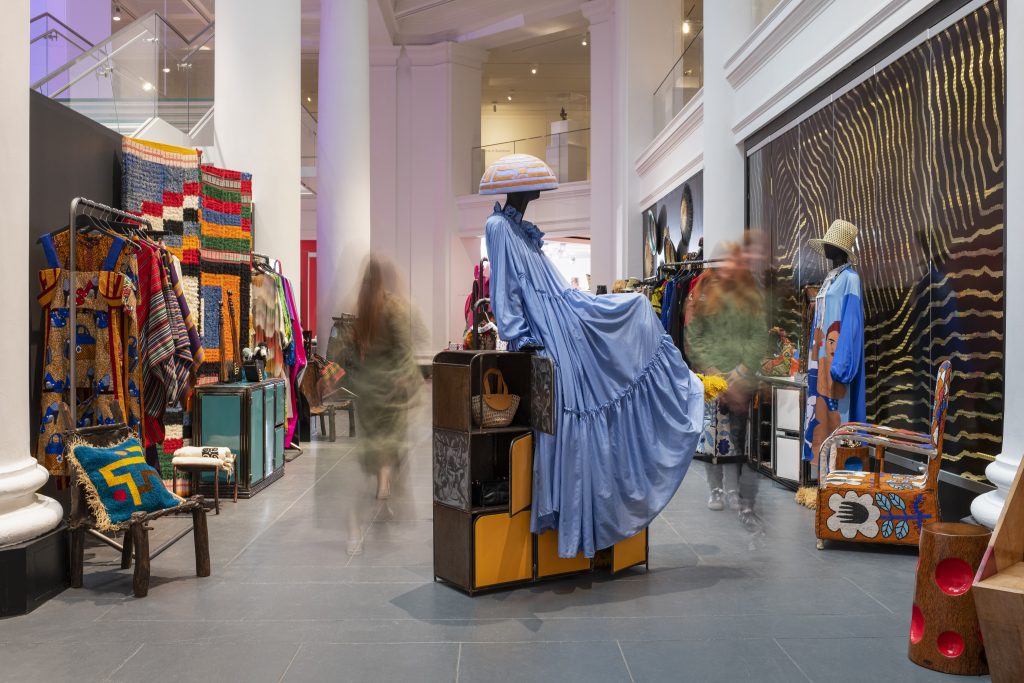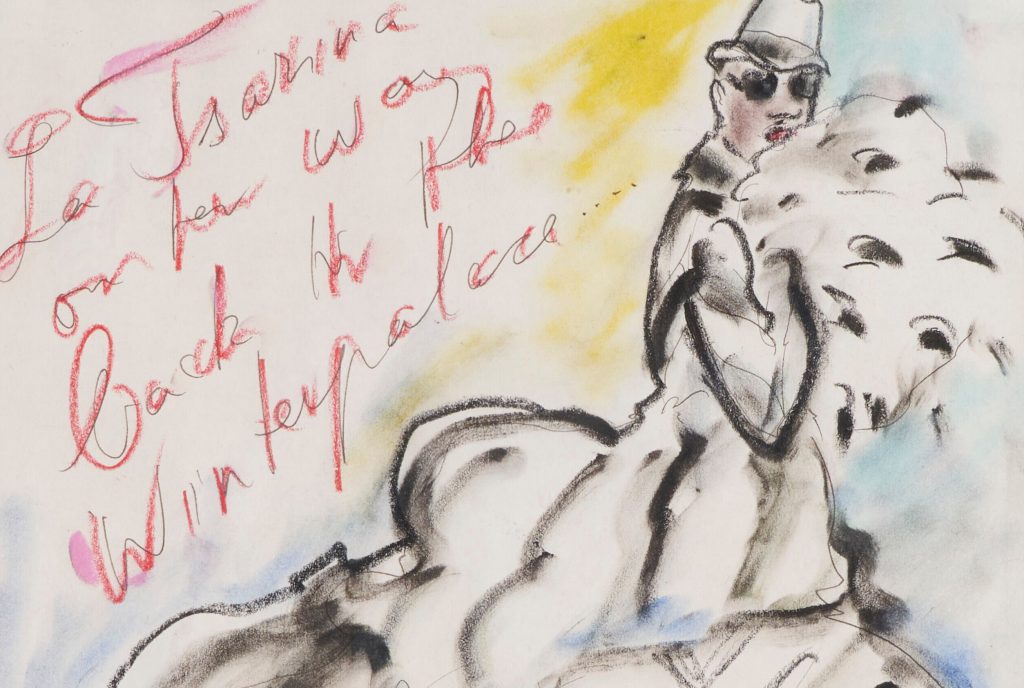Interview: Jessica Lapidos of TILLYandWILLIAM
We talk to one half of the Brooklyn-based duo that’s revolutionizing fashion with transformable, genderless garments


The fashion industry seems inherently designed to form addiction; as soon as you perfect your wardrobe to suit the demands of a particular season’s style, a new era is ushered in. It’s a vicious cycle that is costly to people and the environment, with rapacious, unsustainable demands. Designers Jessica Lapidos and Tom Barranca are fighting that harmful construct with their fashion experiment TILLYandWILLIAM, a collection of transformable, consciously-designed, gender-neutral garments that defy all current industry standards.
Based in Brooklyn, TILLYandWILLIAM has been an exercise in sustainability from day one. By tossing out the gender binary, TILLYandWILLIAM not only cut their manufacturing demands in half, but also challenged Lapidos and Barranca to design for total versatility so that pieces could fit all body types. This challenge grew into an idea to create totally fluid pieces that shift into countless variations—from capes to dresses to even pants. It’s a novel concept that gives each TILLYandWILLIAM piece the potential to be a diverse, multi-functional wardrobe on its own, with the ability transcend fad, taste and need.
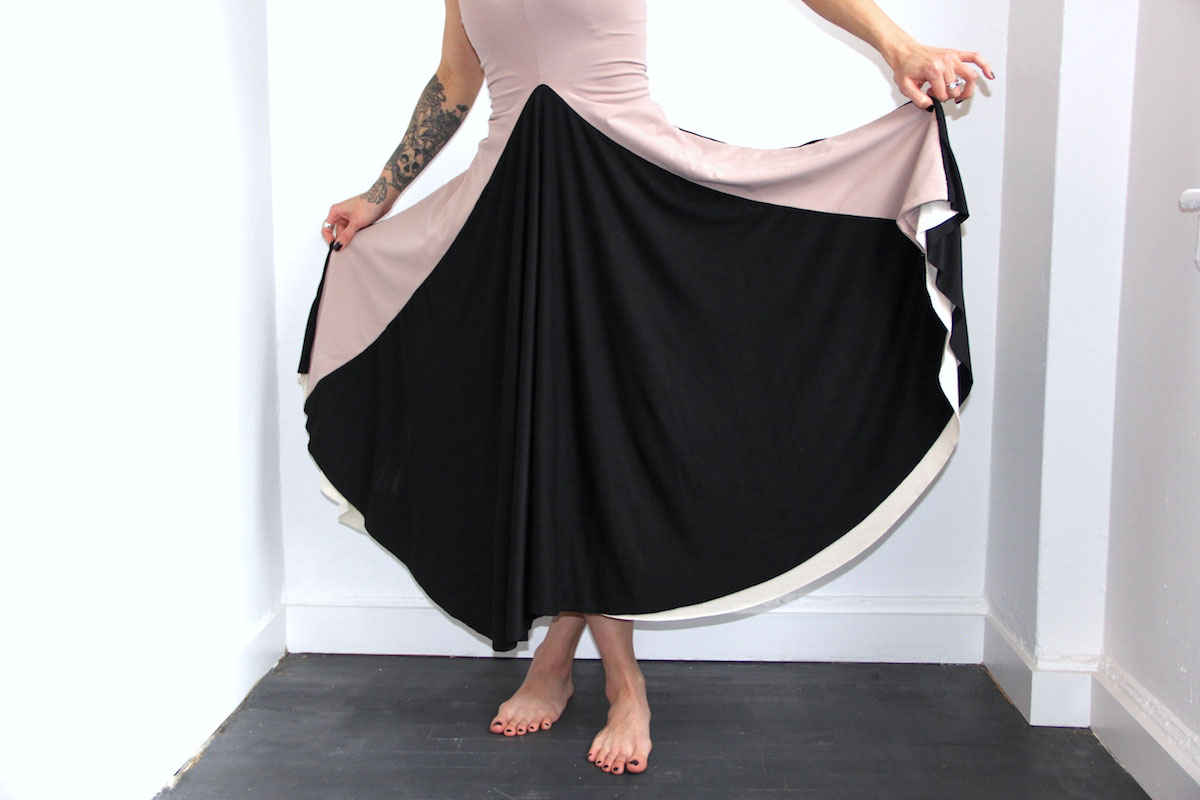
What’s more, TILLYandWILLIAM does it all with ethically-sourced, eco-friendly fabrics, experimenting with recycled fibers and repurposed materials. In fact, TILLYandWILLIAM also recycles its own pieces as part of its “reuptake” policy, offering to take back garments no matter the condition in exchange for discounts on future purchases or the opportunity to have the piece redesigned. Combining all this with a conscious eye on fair labor and manufacturing practices, TILLYandWILLIAM has created a guiding principle for high-fashion, low-impact design.
We spoke with Jessica Lapidos about the revolutionary fashion label, and tested out the versatility of TILLYandWILLIAM’s Multiforamen piece.
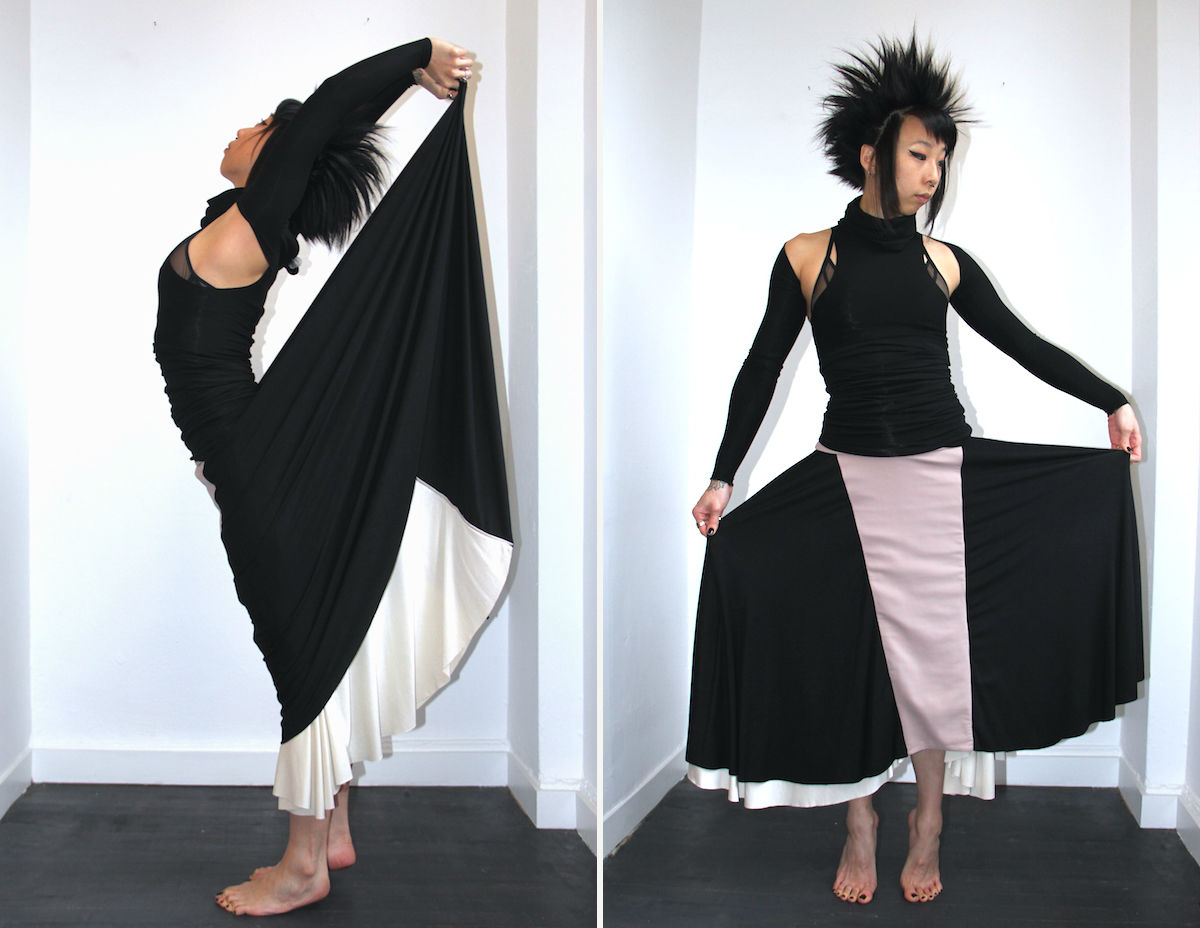
What’s your perspective on the nature of clothing manufacturing today, and how does it affect your philosophy and mission?
Fast fashion is built to satiate a momentary desire, nearly quicker than humanly possible, on a massive scale. There is a vast amount of suffering that goes into creating the overwhelming amount of clothing that is circulating in the world right now. From the destruction of nature, to the exploitation of communities, to the harsh and sometimes deadly conditions people are forced to work in, to idea thievery from artists and unrealistic body images.
In addition to a personal boycott on fast fashion, we combat those industrial atrocities of manufacturing by making clothes that are built to last through the rise and fall of hemlines, the shift of color mood, and can be worn in so many ways that it doesn’t look like you’re wearing the same thing over and over again—and we make them responsibly from environmentally sound material.
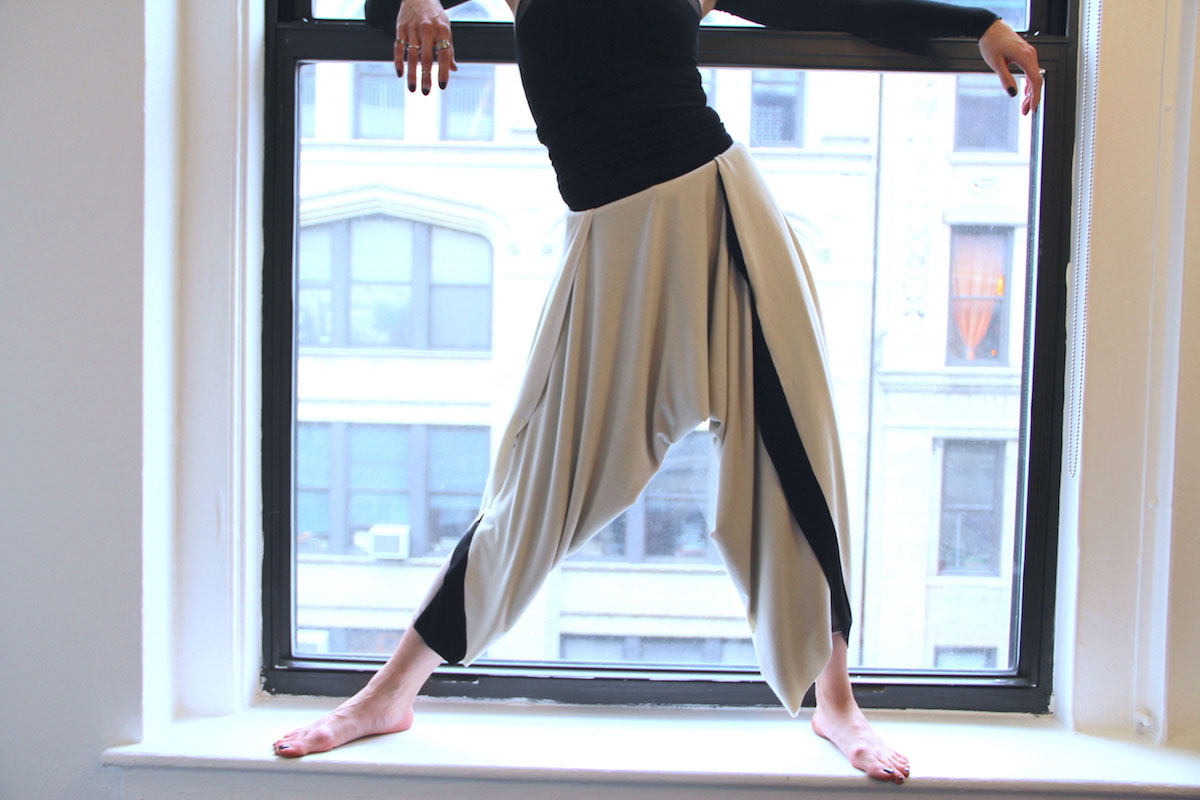
Can you talk about where you source your materials, and the philosophy behind the fabrics and manufacturers you choose?
Through various trade shows and fabric agents based in New York, we touch thousands of swatches to find the softest textures—the ones we really want to rub our faces in. Then we ask the tough questions. We ask about how the raw materials were grown, how they were processed and the conditions they were made in. If they stand up to our ethical, environmental and comfortable standards, then we pursue it.
The manufacturers we work with now are in New York City. We go to the factories and work closely with them. We get to meet the people who cut and sew. We see the hard work that goes into the repetition, the perfection, the precision, and get to thank them personally, and pay them fairly. It’s empowering to see our creations pass through the hands of many skilled workers, and even more thrilling to show and explain our designs to them. Our garments have unusual construction methods, so explaining the inner workings of construction while curving to their expertise has been a fruitful collaboration that is the most enriching in-person.
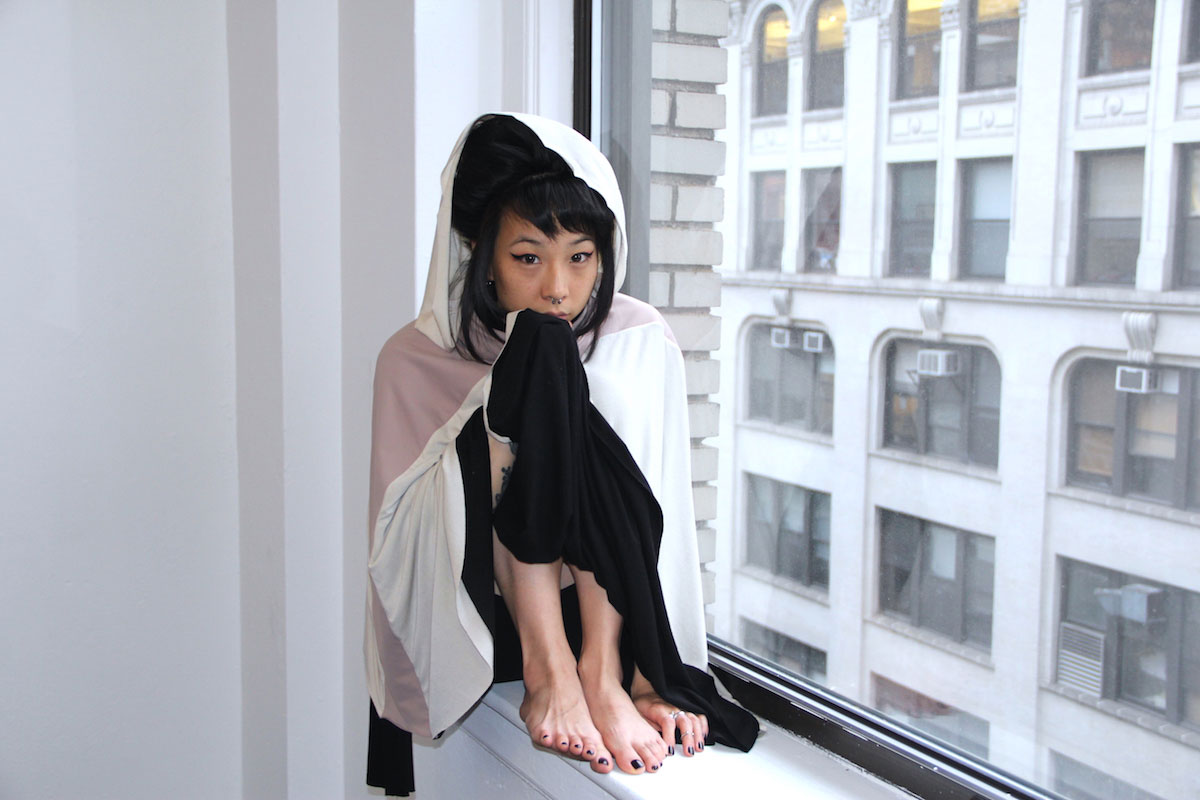
You often create challenges for yourself, like the CUT collection, which required zero stitching. How do these challenges help develop TILLYandWILLIAM?
We founded the brand on the philosophy of transformability and unisexuality, so each design stems from the place of how many different ways can this garment be worn, and how comfortably? So TILLYandWILLIAM designs are essentially always functioning within this challenge. Because the initial challenge has already inspired and pulled so many inventions out of us, we’ve realized that a very directed and surprising creativity becomes employed here. These explorations like the CUT collection are examples of us as designers pushing ourselves to work within an even greater set of constraints.
Design constraints and stringent moral code keep our clothes consistent, yet evolving. It’s a place to start from each time. By giving ourselves these narrow guidelines, it actually opens us up to an even broader realm of possibility.

There’s something quite lovely about your “reuptake” policy that goes beyond the usual reduce/reuse/recycle. It’s more like you’re developing lifelong relationships with your customers and clients. Do you feel like you’re creating a TILLYandWILLIAM family?
It definitely feels like we’re creating a family around TILLYandWILLIAM. It feels very personal when people wear our clothes, it’s so thrilling. And people keep discovering new ways to wear each piece. It’s a learning and bonding experience every time.
We do acknowledge that clothes can distort over time; the cuts of CUT pieces can grow. The natural dyes evolve and sometimes react with natural elements they encounter. Spills happen. Tastes change. It’s a part of personal evolution. We accept that and want to make sure that these materials keep working for their owner, and ensure they don’t end up in landfills. Those materials still hold value, and so does the relationship between all of the people that each garment unites. Imagine if you could build a friendship with the new owner of your old clothes; someone else can find joy in the piece of clothing that you once loved but that no longer serves you. Imagine if your stain becomes a pattern repeat, using food and drink and dirt to bring clothes back to life. The clothes are fun to wear, so everything surrounding the making and reviving of the clothes should be fun, too.

TILLYandWILLIAM’s versatile garments are available for purchase online.
Images by Gabriella Garcia

